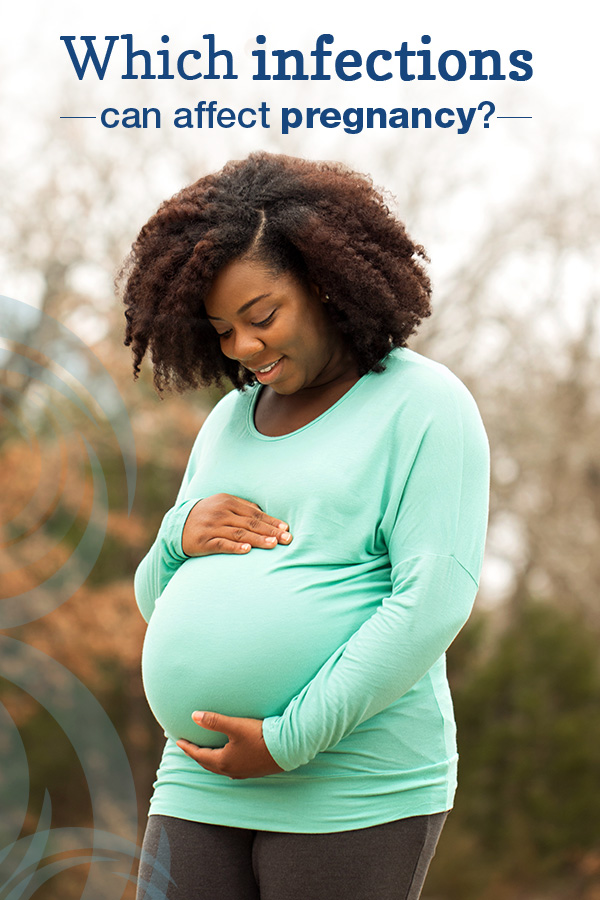Pregnancy is the term used to describe the period in which a fetus develops inside a woman's womb or uterus.
Pregnancy usually lasts about 40 weeks, or just over 9 months, as measured from the last menstrual period to delivery. Health care providers refer to three segments of pregnancy, called trimesters. The major events in each trimester are described below.1
The events that lead to pregnancy begin with conception, in which a sperm penetrates an egg. The fertilized egg (called a zygote) then travels through the woman's fallopian tube to the uterus, where it implants itself in the uterine wall. The zygote is made up of a cluster of cells that later form the fetus and the placenta. The placenta connects the mother to the fetus and provides nutrients and oxygen to the fetus.2
- Between 18 and 20 weeks, the typical timing for ultrasound to look for congenital anomalies, you can often find out the sex of your baby.
- At 20 weeks, a woman may begin to feel movement.
- At 24 weeks, footprints and fingerprints have formed and the fetus sleeps and wakes regularly.
- According to research from the NICHD Neonatal Research Network, the survival rate for babies born at 28 weeks was 92%, although those born at this time will likely still experience serious health complications, including respiratory and neurologic problems.3
- At 32 weeks, the bones are soft and yet almost fully formed, and the eyes can open and close.
- Infants born before 37 weeks are considered preterm. These children are at increased risk for problems such as developmental delays, vision and hearing problems, and cerebral palsy.4 Infants born between 34 and 36 weeks of pregnancy are considered to be "late preterm."4
- Infants born in the 37th and 38th weeks of pregnancy—previously considered term—are now considered "early term." These infants face more health risks than infants who are born at 39 weeks or later, which is now considered full term.6
- Infants born at 39 or 40 weeks of pregnancy are considered full term. Full-term infants have better health outcomes than do infants born earlier or, in some cases, later than this period. Therefore, if there is no medical reason to deliver earlier, it is best to deliver at or after 39 weeks to give the infant's lungs, brain, and liver time to fully develop.6,7,8
- Infants born at 41 weeks through 41 weeks and 6 days are considered late term.6
- Infants who are born at 42 weeks and beyond are considered post term.6
Citations
- Office on Women's Health. (2010). Stages of pregnancy. Retrieved May 20, 2016, from http://womenshealth.gov/pregnancy/you-are-pregnant/stages-of-pregnancy.html
- American College of Obstetricians and Gynecologists (ACOG). (2020). Patient education: How your fetus grows during pregnancy. Retrieved December 30, 2020, from https://www.acog.org/store/products/patient-education/pamphlets/pregnancy/how-your-fetus-grows-during-pregnancy
- Stoll, B. J., Hansen, N. I., Bell, E. F., Shankaran, S., Laptook, A. R., Walsh, M. C., et al. (2010). Neonatal outcomes of extremely preterm infants from the NICHD Neonatal Research Network. Pediatrics, 126, 443–456. PMID: 20732945
- Spong, C. Y. (2013). Defining "term" pregnancy: Recommendations from the Defining "Term" Pregnancy Workgroup. JAMA, 309(13), 2445–2446. Retrieved October 28, 2013, from http://jama.jamanetwork.com/article.aspx?articleID=1685467
- Centers for Disease Control and Prevention. (n.d.). CDC WONDER: About natality, 2007-2014. Retrieved May 20, 2016, from http://wonder.cdc.gov/natality-current.html
- ACOG Committee on Obstetric Practice and Society for Maternal-Fetal Medicine. (2013; Reaffirmed 2015). Committee Opinion No. 579. Definition of term pregnancy. Retrieved May 20, 2016, from https://www.acog.org/clinical/clinical-guidance/committee-opinion/articles/2013/11/definition-of-term-pregnancy
- NICHD. (2013). Carrying pregnancy to 39 weeks: Is it worth it? Yes! Retrieved July 8, 2016, from https://www.nichd.nih.gov/news/resources/spotlight/Pages/013113-NCMHEP-videos.aspx
- NICHD. (2013). Redefining the term. Retrieved July 8, 2016, from https://www.nichd.nih.gov/news/resources/spotlight/Pages/102413-redefining-term.aspx



 For the latest information on COVID-19 and pregnancy, visit CDC at
For the latest information on COVID-19 and pregnancy, visit CDC at  BACK TO TOP
BACK TO TOP